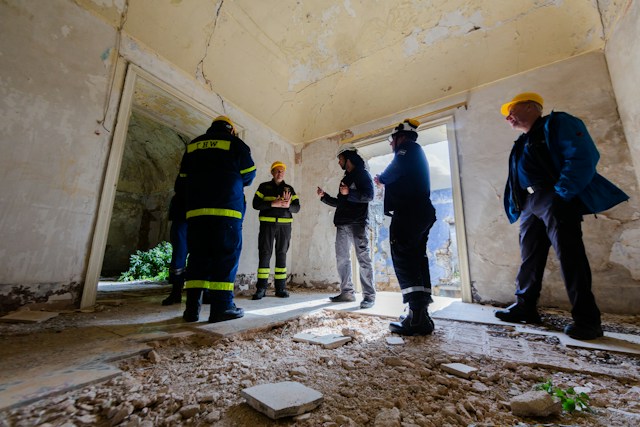Boiling summers, freezing winters, high winds, and heavy loads expose buildings, structures, and civil engineering projects to substantial climatic fluctuations that stress materials and components. That is why structural monitoring is essential.
Structural monitoring ensures better safety and drastically reduces maintenance costs by avoiding unnecessary maintenance work. Let’s dive into how it works.
Real-Time Data Collection
Construction companies need access to real-time data to make better decisions and prevent accidents. Using VR to monitor structural safety and health is one of the most effective ways to collect and use this data.
This technology provides several benefits, including early detection of structural issues and optimization of maintenance schedules. It also enables safer working conditions and improves overall project management efficiency.
Structural monitoring building is essential in improving worksite safety and ensuring building safety, but more than traditional methods are needed for detecting problems. With conventional monitoring systems, only limited data is collected, and information is transmitted slowly, meaning potential hazards can go unnoticed until it’s too late.
VR uses cutting-edge technologies to enable real-time data collection and monitoring. It allows engineers to identify and address issues before they become major disasters. It also allows them to optimize maintenance schedules, minimizing downtime and cost savings.
Early Detection of Anomalies
Structural monitoring provides real-time data on a structure’s integrity. It enables construction teams to identify problems like cracks or structural behavior shifts and take preventive measures to avoid accidents or catastrophic failures.
Sensors collect data regularly and transfer it to a computing system that uses software to interpret it. This process identifies anomalies from reference values and allows engineers to develop response protocols, including inspections, repairs, additional reinforcements, or, in extreme cases, evacuation and demolition of the structure.
Moreover, sensors can also be used to verify design assumptions. It is crucial, as incorrect assumptions during construction can lead to structural weaknesses. Using geotechnical instruments and structural monitoring sensors, engineers can ensure the safety of structures like bridges, buildings, and dams. That saves time and money and contributes to long-term project success. It also helps reduce risk and optimizes maintenance efforts. It can increase the lifespan of a structure and maximize its value.
Predictive Maintenance
Structural monitoring involves continuously measuring structural factors like loading, weather, and other variables to detect and predict faults. This process uses permanently installed sensors to collect data displayed in bright graphics and alerts. It helps maintain infrastructures, extend their working lives, and reduce maintenance costs. It also promotes a shift from a design-based philosophy towards a performance-based one.
The constant monitoring of structures in the field identifies potential failures that might occur outside scheduled inspection intervals of preventive maintenance. It allows you to take corrective action well before the problem becomes severe enough to cause a collapse or accident.
Structural monitoring is a game-changing technology that can improve business efficiency and safeguard lives and property. However, it is essential to remember that implementing predictive maintenance requires a significant investment in sensors, equipment, and software. That said, it offers a substantial return on investment and can help your organization achieve cost savings, improved productivity and safety, and extended asset lifespans.
Artificial Intelligence
Artificial intelligence uses machine learning to automate inspections by comparing real-time data with predefined safety standards. It eliminates manual inspections and helps improve construction companies’ efficiency while ensuring compliance with safety regulations.
The AI software receives data from the data acquisition hardware and analyzes it instantly to identify possible structural problems. It also creates response protocols for engineers to implement when the system detects a problem. In severe cases, these protocols may include further inspections, repairs, or evacuation.
Construction accidents account for a significant portion of workplace fatalities. AI elevates safety inspections by identifying dangerous conditions like missing guard rails, insufficient personal protective equipment, and improper scaffolding. It then prioritizes these issues to create notifications for safety professionals, acting as an extra pair of eyes peeled 24/7. The result is a safer work environment for workers and a reduced risk of project delays, cost overruns, and litigation.



